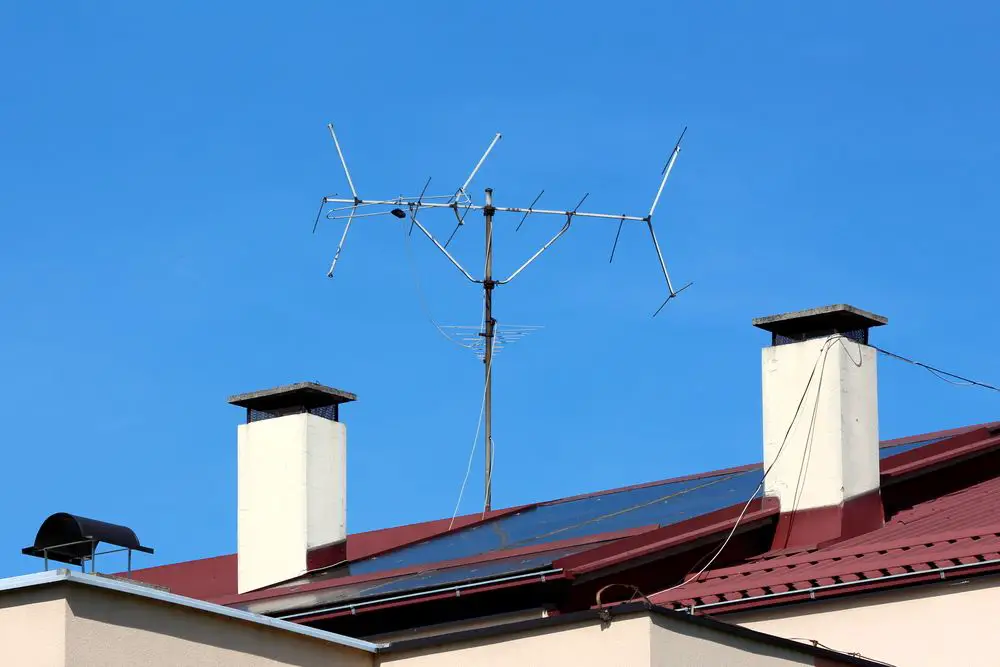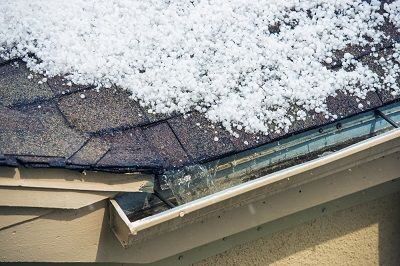
*As an Amazon Associate we may earn from qualifying purchases when you buy through links on our site.
When it comes to TV signals, the generally accepted rule of thumb is that the higher your antenna, the better the signal reception.
So, if you’re thinking of installing a TV antenna in your home, you might think about getting yourself an antenna mounting pole to extend its height.
Do you need an antenna mounting pole, and if so, what are the advantages and disadvantages of having one?
We’re going to quickly touch on these topics and give you a tutorial on how to successfully and safely install an antenna mounting pole in your home.
Do you Need an Antenna Mounting Pole?
You could always use an antenna mounting pole to ensure that your TV antenna is as high as can be so you can get a better signal.
There are, of course, a few exceptions to this rule. For example, you might not need an antenna mounting pole if:
- You already live on high ground with no known signal interference obstacles such as trees and other taller buildings.
- You live at the top of the highest building around.
- You intend to mount your antenna on your chimney, and that height is sufficient for clear signals.
- You’re fine with your current TV signal.
Now, the next question would be: do you buy a real antenna pole, or can you just use that steel pipe or PVC that’s been lying around your home for ages?
This depends on your budget and how long you’d like the mount to last, along with your own DIY skills. Mounting an antenna on PVC pipe or another home-made contraption may be perfectly fine, but might take more time for you to set up.
Benefits of Having an Antenna Mounting Pole
Of course, the advantages of buying a real antenna pole come with choosing the right kind of pole for your purposes.
For this discussion, let’s assume you have bought the Proxicast J-Max Stainless Steel Antenna Mount shown in the picture above.
What are the advantages that come with buying such an antenna mounting pole, and many others like it?
- It’s easily adjustable (direction): When mounting your antenna, you are seldom going to get it right the first time. Sometimes, when a few channels are crystal clear, you’ll find that some of your favorites aren’t.
The best way to ensure that everything works the way you want it to is to gradually adjust the mounting pole, which in turn adjusts the position of the antenna (which then gives you more chances of getting all the right channels clearly).
We like the Proxicast pole since it gives you a 45-degree adjustability allowance for better signal reception.
- It features a reversible design: This is a J-pole mount that allows you to use both sides of it, giving you more mounting options.
- It comes with base mount and bolts for locking: One of the biggest issues with pole-mounted antennas is that they tend to be at the mercy of the elements. Strong winds can often change the angle settings or bring them down altogether. This one, in particular, comes with a base mount and locking bolts, which provides a reliable locking mechanism.
- Stainless steel: The materials of this product are weather resistant and won’t leave marks on the structure.
Finally, this particular mount is very easy to assemble and install, which makes it a household favorite for many homeowners.
Disadvantages of Having an Antenna Mounting Pole
There aren’t that many disadvantages that come with having an antenna pole mounted in your home, but here are a few:
The mounting process can be tricky: If you’re not an avid DIY enthusiast, you might find this mounting process a little more than just a bit tedious.
Roof work can be risky: Depending on where you want to mount the pole, this process is risky. For the most part, many homeowners like mounting them on the roof, and that brings with it a host of hazards, including potential falls, interaction with overhanging power lines, and roof damage.

Weather issues: As already mentioned, unless the antenna is mounted in the sturdiest of ways, rain, wind, and even snow might affect your workmanship and bring the antenna down.
Then, of course, there’s the little matter of trying to find the right direction for the strongest signals. This exercise involves some trial-and-error and can be time consuming.
Simple Tips on How to Install an Antenna Mounting Pole
If you’ve decided that using an antenna mounting pole is the right course of action for you, here are some simple steps on how to make that installation process not only safer but successful:
Buy the Right Antenna Mounting Pole
You want an antenna mounting pole that’s sturdy enough to take on the elements, but that’s also easy enough to install. And, of course, affordability always figures into the equation.
Follow the Installation Instructions
Most, if not all, antenna mounting pole manufacturers give you a detailed installation manual that will not only help you put the entire mounting pole together but will also help you find the right position for the wall mounts and brackets during your installation process.
If you’re installing the antenna mounting pole on your roof, be sure to assemble the separate parts beforehand but don’t screw them together before getting on the roof.
This makes the climb with the separate components much easier and safer.
Find the Right Spot
For best results, you want to mount your antenna at the highest possible location with the least hindrances or signal interference objects such as trees, electric wires, and other taller buildings.
Finally, even before you embark on doing any of these things, be sure to check the weather. Rain, snow, and strong winds are hazards to this endeavor. Be sure to carry out the installation when the weather is friendly.
Do you need an antenna mounting pole? Yes, if you want to get good or better TV signals, then you need an antenna mounting pole.

